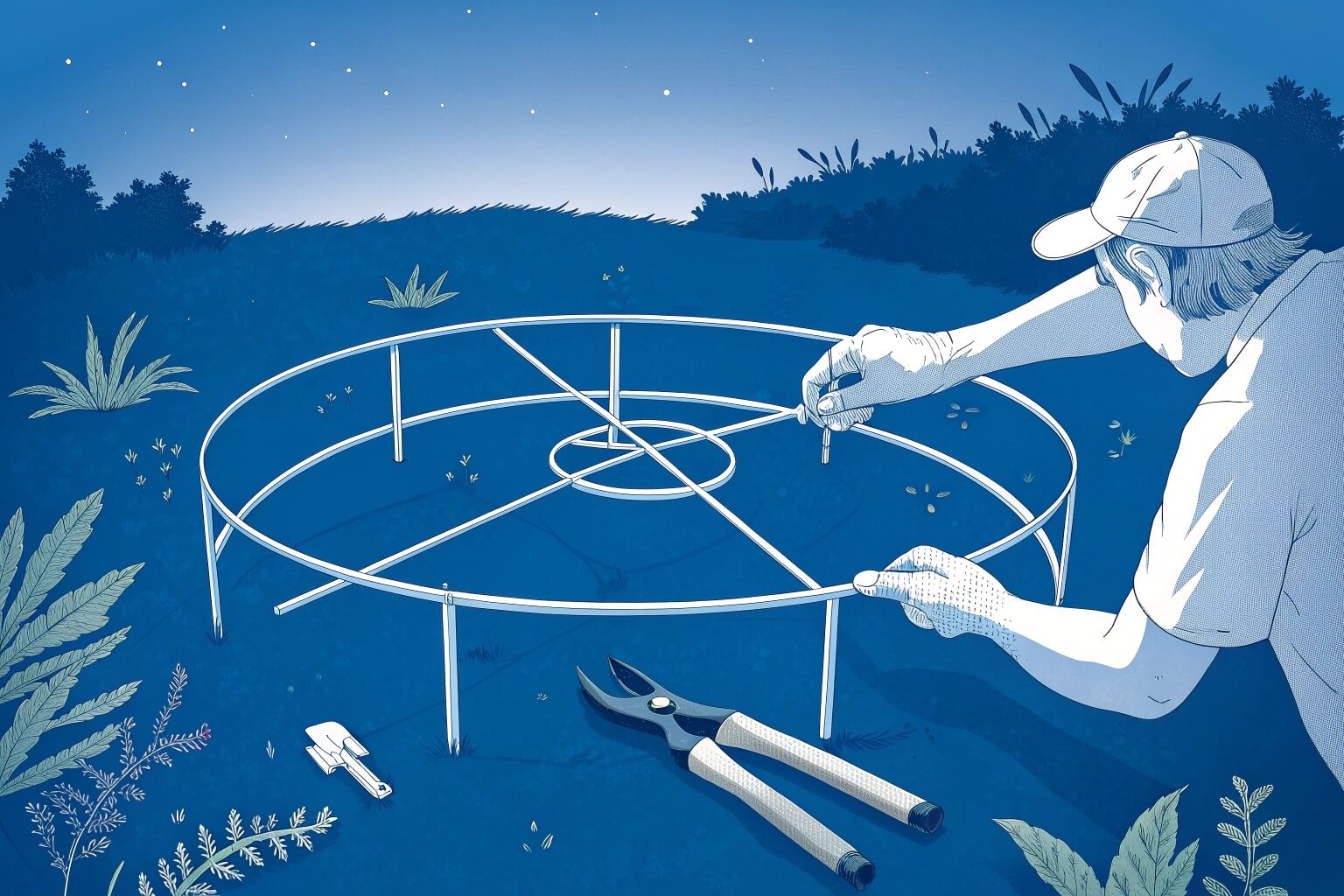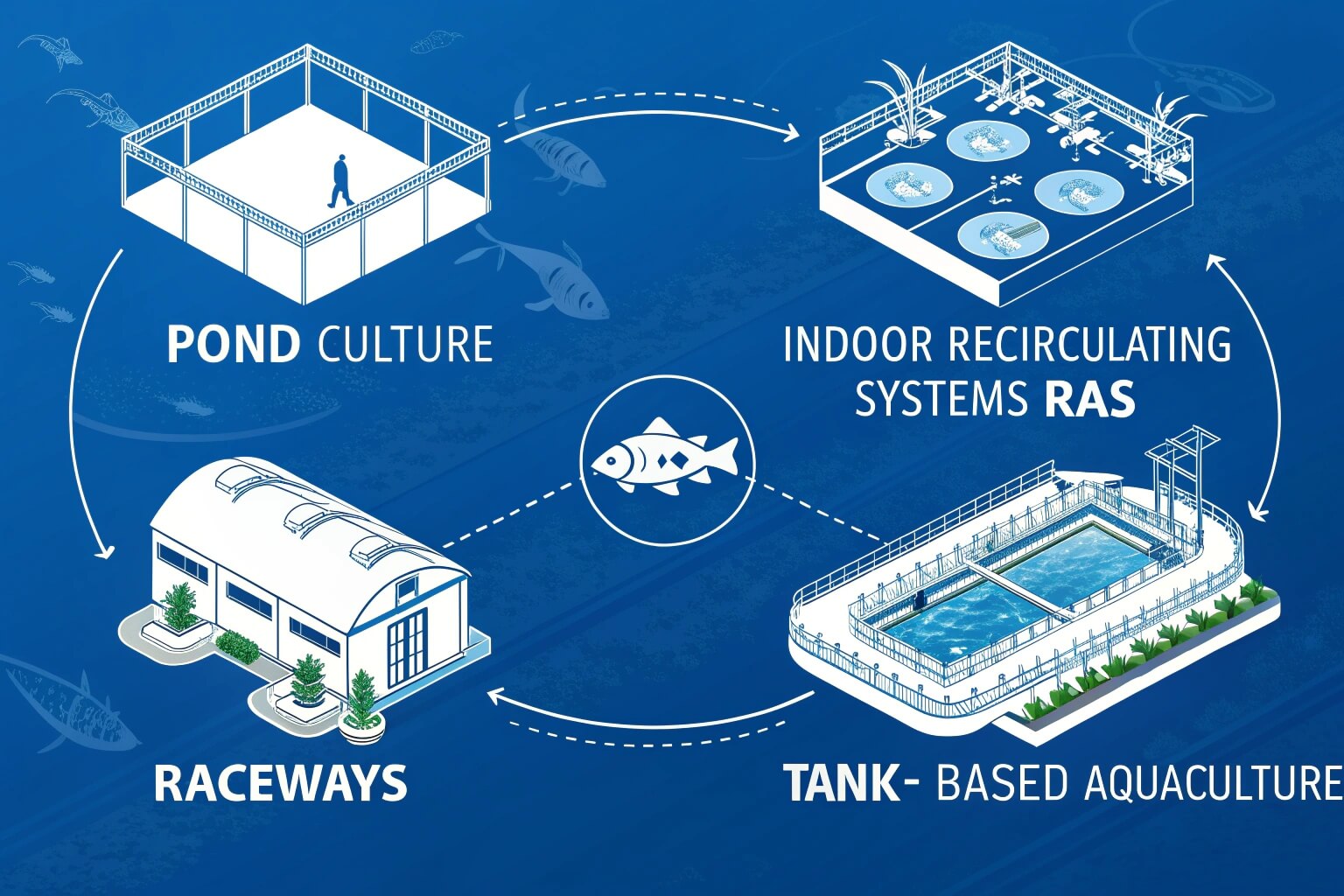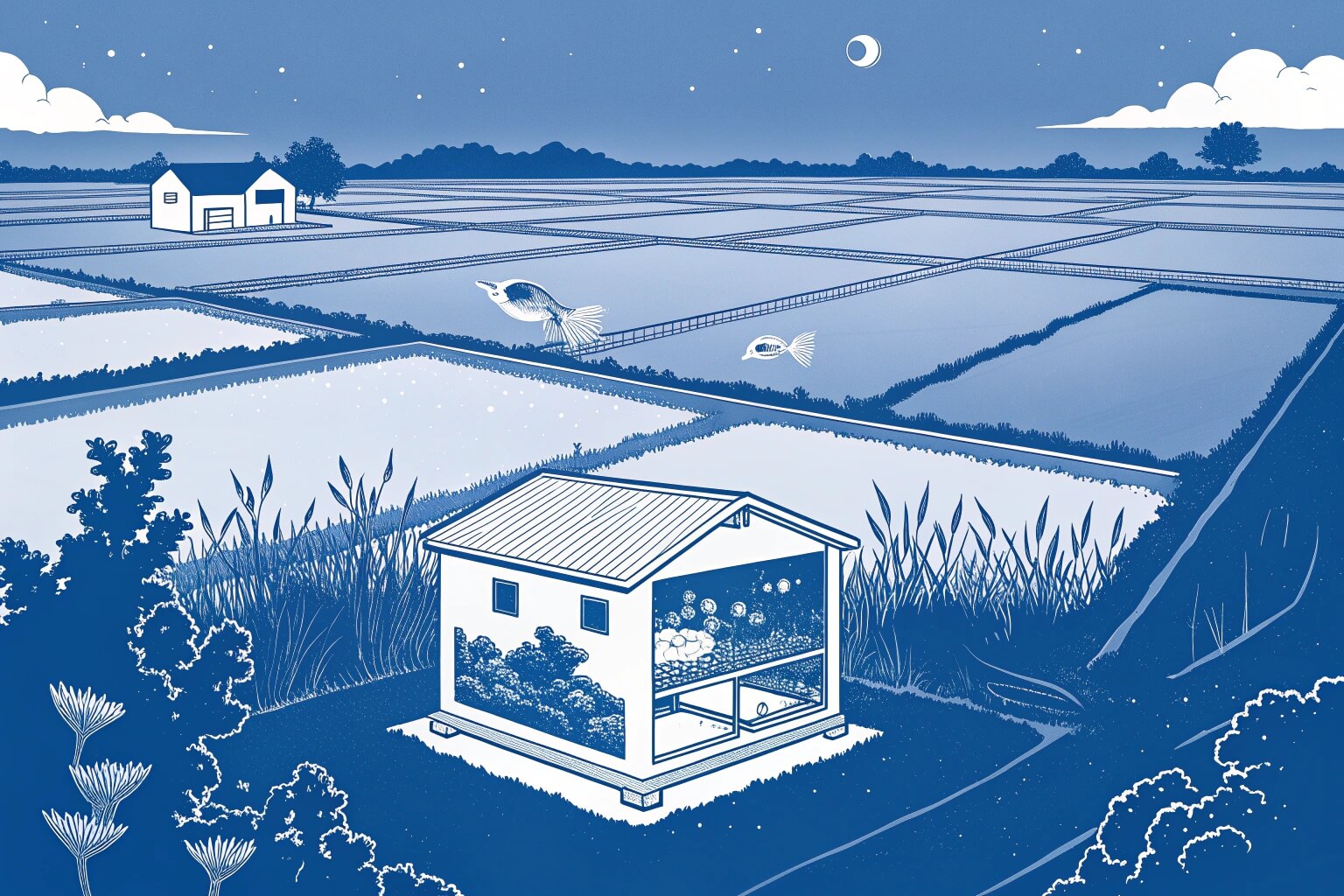Can You Help Us Set Up a Fish Farming Project?
Starting a fish farm might seem complicated and maybe a bit daunting. Feeling unsure where to begin? We aim to make the process clearer and more manageable for you.
Yes, at Bancy Solutions, we can definitely help you set up your fish farming project. We provide robust, customizable equipment like our easy-to-use collapsible fish tanks, and we share practical advice based on experience to get your farm operational effectively.

Embarking on a new venture like fish farming often raises many questions. It's completely normal to want to understand the details before diving in. Let's explore some of the most common questions people ask when considering setting up a fish farm.
Can you make a fish farm?
Thinking about building your own fish farm from the ground up? Wondering if it's something you can actually achieve? With the right planning and resources, it's certainly possible.
Yes, you absolutely can make a fish farm. The process involves several key stages: planning your operation, choosing a suitable farming method and fish species, acquiring the necessary equipment like tanks, and then managing the day-to-day activities of the farm.

Creating a fish farm yourself is a rewarding process, but it requires careful thought and execution. It's not just about digging a hole or buying a tank; it's about creating a sustainable ecosystem for your fish. Let's break down what's involved.
Key Steps in Creating Your Farm
First, you need a solid plan. This includes defining your goals (hobby or business?), choosing your fish species, and researching the market if you plan to sell. Next comes site selection – you need access to a reliable water source and suitable land. You'll also need to check local regulations and obtain any necessary permits. Then, you acquire the equipment. This is where tanks, like the ones we offer at Bancy, come in. After setting up, you introduce your fish stock (fingerlings). Finally, the ongoing work begins: feeding, monitoring water quality, managing fish health, and eventually harvesting.
How Bancy Supports Your Setup
We specialize in providing essential equipment, particularly the tanks. We offer several types:
- GALVANIZED PIPE FISH TANK1: Robust and corrosion-resistant, great for long-term setups.
- GALVANIZED SHEET FISH TANK: Durable, also corrosion-resistant, suitable for various environments.
- COLLAPSIBLE PLASTIC FISH TANK2: Lightweight, non-toxic, easy to set up and move, perfect for beginners or temporary needs.
These tanks are designed for ease of use and durability. I've seen many clients, especially those new to fish farming3, get started quickly using our collapsible tanks because they require minimal site preparation and are straightforward to assemble. They provide a controlled environment, which is crucial for managing fish health.
Essential Factors to Consider
Beyond the physical setup, think about water. Is your source clean and reliable? Water quality is paramount in fish farming. Also, understand the specific needs of the fish species you choose – temperature, feeding habits, and potential diseases. And very importantly, don't overlook local regulations regarding water use, discharge, and permits. Checking these early can save a lot of headaches later.
| Basic Fish Farm Startup Checklist | Description | Status (Example) |
|---|---|---|
| Planning | Define goals, choose species, market research | Done |
| Site Selection | Assess land, water source, accessibility | In Progress |
| Permits & Regulations | Check local rules, apply for necessary licenses | To Do |
| Equipment Acquisition | Purchase tanks (like Bancy's), pumps, nets, feed | Researching |
| Setup & Installation | Prepare site, install tanks and systems | To Do |
| Fish Stocking | Source healthy fingerlings | To Do |
| Ongoing Management | Plan feeding schedule, water testing, monitoring | To Do |
Which method is best for fish farming?
Feeling confused by the different ways to raise fish? Unsure which approach fits your specific situation, resources, and goals best? Let’s look at the common options to help you decide.
There isn't one single "best" method for everyone. The ideal approach depends heavily on factors like your budget, available space, water resources, technical skills, and the type of fish you want to raise. Common methods include pond culture, raceways, RAS, and tank systems.

Choosing the right fish farming method is crucial for success. Each technique has its own set of advantages, disadvantages, and requirements. Understanding these differences will help you select the method that aligns best with your circumstances.
Exploring Common Fish Farming Techniques
- Pond Culture4: This is one of the oldest and simplest methods, often involving earthen ponds. It's generally less expensive to start but requires more land and depends heavily on the natural environment. Water quality management can be challenging.
- Raceways: These are typically long channels with continuous water flow. They allow for higher stocking densities than ponds but require a significant and constant supply of high-quality water.
- Recirculating Aquaculture Systems (RAS)5: These are intensive, land-based systems where water is treated and reused. RAS allows for high control over the environment and high stocking densities in a small footprint, but they require significant investment in technology and energy, plus higher technical expertise.
- Cage Culture6: Fish are raised in cages placed in existing bodies of water like lakes, rivers, or the ocean. Startup costs can be lower, but it relies on suitable water bodies and can face regulatory hurdles and environmental concerns.
- Tank-Based Systems: Using tanks (like plastic, fiberglass, or galvanized steel) offers flexibility. Based on my experience, tank systems provide excellent control over the environment and can be adapted to various scales, from small backyard setups to larger commercial operations. They are often easier to manage regarding water quality and harvesting compared to ponds.
Factors Influencing Your Choice
Several factors should guide your decision. How much space do you have? Pond culture needs acres, while RAS or tank systems can fit in smaller areas. What's your water availability? Raceways need lots of flowing water; RAS conserves water. What's your budget? Ponds might have lower initial costs, while RAS is expensive upfront. What are your technical skills? RAS demands more expertise than a simple pond or tank setup. What species are you raising? Some fish thrive better in specific systems.
How Bancy's Tanks Fit In
Our collapsible tanks are particularly versatile. They are excellent for tank-based systems and can even supplement other methods (e.g., used as holding or nursery tanks). Their key advantages are:
- Flexibility: Easy to set up, dismantle, and relocate.
- Scalability: Start small and add more tanks as you grow.
- Control: Easier to manage water quality and monitor fish compared to large ponds.
- Space Efficiency: Suitable for locations with limited land.
We offer different frame types (galvanized pipe, galvanized sheet, plastic) with durable PVC liners to suit various needs and budgets.
| Comparing Key Methods | Pros | Cons | Ideal For |
|---|---|---|---|
| Pond Culture | Lower initial cost, simpler technology | Needs lots of land, less control, water quality issues | Large areas, hardy fish species |
| RAS (Recirculating) | High control, water conservation, high density | High cost, complex, energy-intensive, needs expertise | Limited space/water, high-value species |
| Tank System (e.g., Bancy) | Flexible, scalable, good control, space-efficient | Can have moderate initial cost depending on scale | Beginners, limited space, various scales, nursery |
| Cage Culture | Uses existing water bodies, potentially lower cost | Environmental concerns, regulatory issues, storm risk | Access to suitable lakes/rivers/ocean |
Which fish farming is most profitable?
Dreaming of turning your fish farm into a profitable business? Wondering which types of fish or farming methods bring the best financial returns? Profitability isn't guaranteed and depends on many factors.
Profitability in fish farming varies greatly. It hinges on market demand for the chosen species, operational efficiency, scale, and management. High-value fish like salmon often yield higher prices but require more investment and expertise, while hardier fish like tilapia offer steadier, potentially lower-risk income.

Making money from fish farming requires more than just raising fish; it involves smart business decisions. Understanding the factors that drive profit is key to building a sustainable and financially successful operation. Let's explore what influences the bottom line.
Key Drivers of Fish Farm Profitability
Several elements directly impact how much money you can make:
- Market Demand & Price: Are people willing to buy the fish you raise, and at what price? Research your local market.
- Species Choice: Growth rate, feed requirements, disease resistance, and market value differ significantly between species.
- Operational Costs: Feed is often the largest expense. Energy (for pumps, aeration), labor, fingerling costs, and health management also add up. Feed Conversion Ratio (FCR) – how much feed it takes to produce 1kg of fish – is critical. I always advise clients to track their FCR closely.
- Scale of Operation: Larger farms can benefit from economies of scale, but also involve higher initial investment and risk.
- Management Efficiency: Good practices in feeding, water quality, and disease prevention minimize losses and maximize growth.
Balancing High-Value and High-Volume Fish
You generally have two paths:
- High-Value Species7: Think salmon, trout, barramundi, or shrimp. These command higher prices but often require cooler water, specific diets, more advanced technology (like RAS), and stricter health management. The potential returns are high, but so are the risks and investment.
- High-Volume Species8: Think tilapia, catfish, or carp. These are often hardier, grow relatively quickly in various conditions, and tolerate lower water quality. Their market price is typically lower, but lower production costs and steady demand can lead to consistent profits, especially for beginners or those with limited resources. As I mentioned in my insights, tilapia is often a good starting point.
Strategies to Boost Your Bottom Line
Regardless of the species, focus on efficiency. Optimize feeding strategies to improve FCR. Maintain excellent water quality to promote health and growth. Prevent diseases proactively rather than treating them reactively. Explore direct sales channels (restaurants, local markets) to potentially get better prices. If feasible, consider simple value-added processing like filleting or smoking. Minimizing waste at every stage, from feed to harvest, is also crucial.
| Profit Factors for Sample Fish Species | Market Value | Growing Difficulty | Feed Cost (FCR) | Notes |
|---|---|---|---|---|
| Tilapia9 | Moderate | Low | Low (good FCR) | Hardy, fast-growing, good for beginners |
| Catfish10 | Moderate | Low-Moderate | Moderate | Popular in many markets, relatively hardy |
| Trout / Salmon11 | High | High | High | Needs cold, clean water, high investment |
| Shrimp | High | Moderate-High | Moderate | Specific water quality needs, disease risk |
How much space is needed for a fish farm?
Concerned that you might not have enough room to start a fish farm? Thinking that aquaculture always requires vast amounts of land or water? The reality is that the space needed depends entirely on your plans.
The amount of space required for a fish farm varies significantly based on the farming method chosen and the intended scale of production. A small-scale hobby farm might only need a backyard area for a few tanks, whereas large commercial pond operations require many acres.

Space is often a primary consideration when planning a fish farm. The good news is that modern methods, especially tank-based systems, allow fish farming to happen in surprisingly compact areas. Let's look at how scale and method influence space requirements.
Space Requirements by Scale
- Small-Scale / Backyard / Hobby: You could start very small. A few of our collapsible tanks12 (e.g., 1,000-5,000 liters each) can fit in a large garage, basement, or a corner of a backyard. This is great for personal consumption or very local sales.
- Medium-Scale / Semi-Commercial: This might involve a larger number of tanks (perhaps 10-20 or more) or small, purpose-built ponds13. It could require a fraction of an acre up to a few acres, depending on intensity. This scale might supply local restaurants or farmers' markets.
- Large-Scale / Commercial: This typically involves extensive pond systems covering many acres, large raceway setups, significant RAS facilities14, or numerous large tanks. These operations aim for regional or national distribution and require substantial land and infrastructure investment.
Intensive vs. Extensive Farming Space Needs
The farming method drastically affects space efficiency:
- Extensive Systems: Traditional pond farming is extensive. It relies on lower stocking densities and natural productivity, thus requiring more surface area per unit of fish produced.
- Intensive Systems: Methods like RAS or densely stocked tank systems are intensive. They use technology (filtration, aeration) to support many more fish in a smaller volume of water. This significantly reduces the land footprint but increases reliance on equipment and management. Our Bancy tanks are well-suited for intensive or semi-intensive approaches, helping you maximize production in the space you have.
Leveraging Collapsible Tanks in Limited Spaces
This is where products like our collapsible fish tanks really shine. Because they don't require permanent construction and come in various sizes, they offer incredible flexibility:
- Urban/Suburban Farming: Set them up in backyards, rooftops, warehouses, or even basements. I've personally seen clients successfully implement our tanks in tight urban environments.
- Temporary or Phased Projects: Easily install tanks for seasonal needs or start small and add more tanks later without major construction.
- Efficient Use of Land: Maximize the growing area within a given footprint compared to traditional ponds.
- Indoors/Outdoors: Can be used inside structures or outdoors, depending on climate and species.
| Estimated Space Needs by Farm Type | Space Example | Key Equipment (Example) |
|---|---|---|
| Small Backyard Hobby Farm12 | 10-50 sq meters (e.g., part of a yard/garage) | 1-3 Small Collapsible Tanks, basic pump/filter |
| Medium Semi-Commercial Tank Farm13 | 500-2000 sq meters (e.g., large shed or small plot) | 10-20+ Medium/Large Tanks, aeration, filtration |
| Large Commercial Pond Farm | 5+ Hectares (12+ Acres) | Multiple large earthen ponds, harvesting gear |
| Commercial RAS Facility14 | 1000+ sq meters (Building footprint) | Large tanks, advanced filtration, monitoring |
Conclusion
Setting up a fish farm involves careful planning and choices, but it is definitely an achievable goal. Success depends on selecting the right method, species, and reliable equipment like our durable Bancy tanks. We're here to support you.
-
Explore the advantages of galvanized pipe fish tanks for durability and corrosion resistance, essential for long-term setups. ↩
-
Learn how collapsible plastic fish tanks can simplify the setup process for beginners and provide a controlled environment for fish. ↩
-
Discover best practices in fish farming to ensure healthy fish and a thriving aquaculture business. ↩
-
Discover the benefits and drawbacks of Pond Culture to understand its suitability for your fish farming needs. ↩
-
Explore the advantages of RAS for efficient fish farming, including environmental control and space optimization. ↩
-
Learn about the regulatory and environmental challenges of Cage Culture to make informed decisions in aquaculture. ↩
-
Exploring this resource will provide insights into the profitability and challenges of high-value fish farming. ↩
-
This link will help you understand the benefits and strategies for successful high-volume fish farming. ↩
-
Explore the advantages of Tilapia farming, including its hardiness and growth rate, ideal for beginners. ↩
-
Learn about the popularity of Catfish in various markets and its relative hardiness, making it a great choice for fish farming. ↩
-
Understand the specific requirements and challenges of farming Trout and Salmon, including water quality and investment needs. ↩
-
Explore this link to understand the specific space and equipment needs for starting a small hobby farm, ensuring you have the right setup. ↩ ↩
-
This resource will provide insights into the essential equipment and space considerations for a semi-commercial tank farm, helping you plan effectively. ↩ ↩
-
Discover the advantages of a Commercial RAS Facility, including efficiency and sustainability, to make informed decisions for your aquaculture business. ↩ ↩